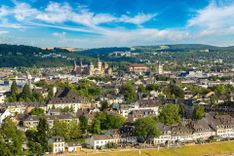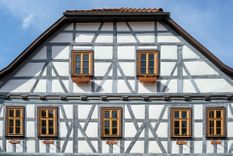Germany
Your Ultimate Travel Guide
Book your individual trip, stress-free with local travel experts
Why Germany?
Discover what makes Germany unforgettable





Walk through Berlin’s layered history, from the Brandenburg Gate to the remnants of the Berlin Wall. Your guide brings the city’s past to life with stories of Cold War divisions, artistic revolutions, and modern reunification. With time to explore hidden courtyards and vibrant neighborhoods, this isn’t just sightseeing - it’s experiencing the soul of Germany’s capital.


Step into a fairytale at Neuschwanstein Castle, the inspiration for Disney’s Sleeping Beauty palace. Perched on a hilltop with breathtaking Alpine views, this 19th-century masterpiece is even more magical when explored at a relaxed pace. With a private guide, you’ll avoid the busiest times and discover the castle’s fascinating stories beyond the postcard-perfect exterior.


Hike through the mystical Black Forest, where towering pines, hidden waterfalls, and half-timbered villages create an unforgettable landscape. Your guide leads you along scenic trails, sharing folklore of fairies and cuckoo clocks while ensuring you find the quietest, most beautiful spots. A stop for homemade Black Forest cake completes this nature-filled escape.


Drift through the rolling vineyards of the Rhine Valley, stopping at family-run wineries to sample crisp Rieslings and hearty Spätburgunders. With a local expert guiding your tastings, you’ll hear the stories behind each bottle and enjoy warm hospitality that makes every sip even more special. This isn’t just a wine tour - it’s a taste of Germany’s countryside at its finest.

Travel Tips
Plan with confidence
Unlock Germany with local insights
Meet the experts who make your journey special

tourism
created
travellers

tourism
created
travellers

tourism
travellers

tourism
created
travellers


Best places in Germany to visit
From icons to hidden treasures






























More travel inspiration
Discover Germany's most captivating stories
Arrange your trip, hassle-free, with local travel experts
Arrange your trip with local travel experts